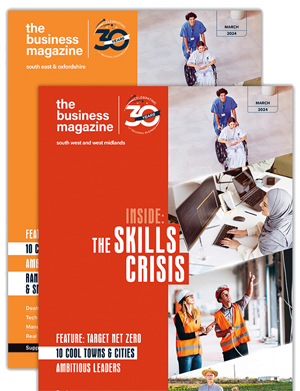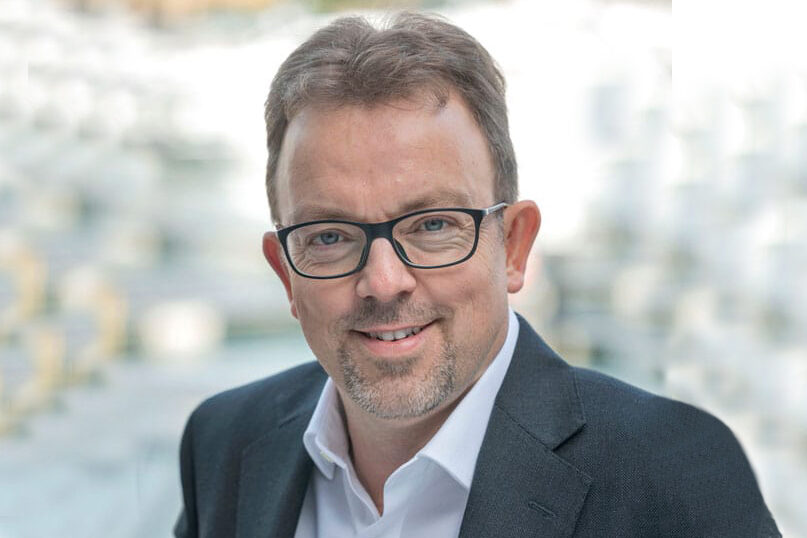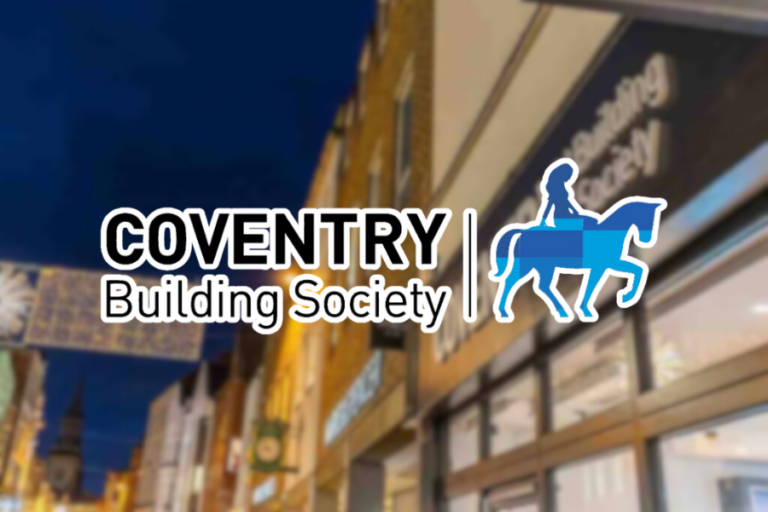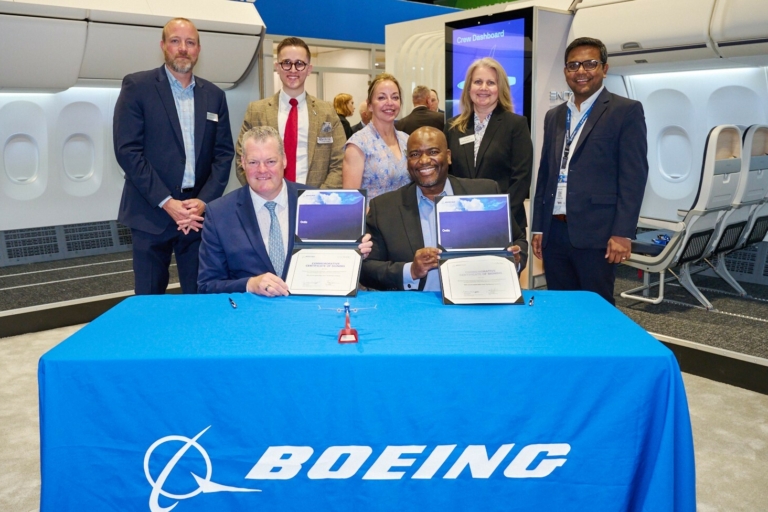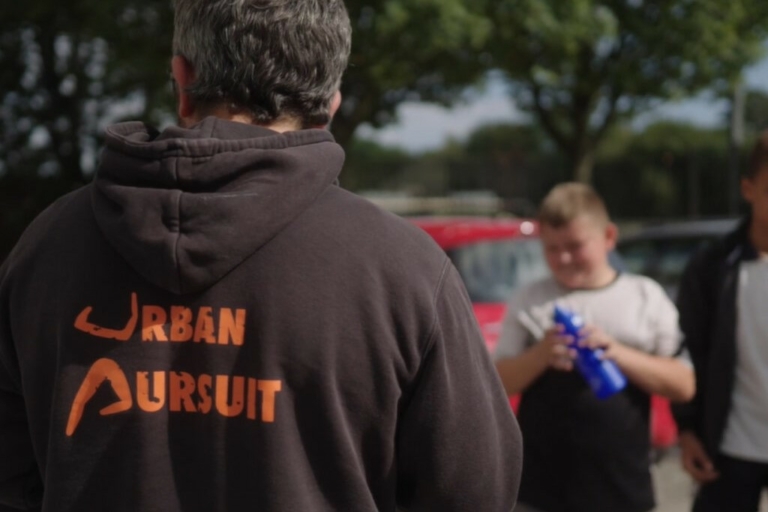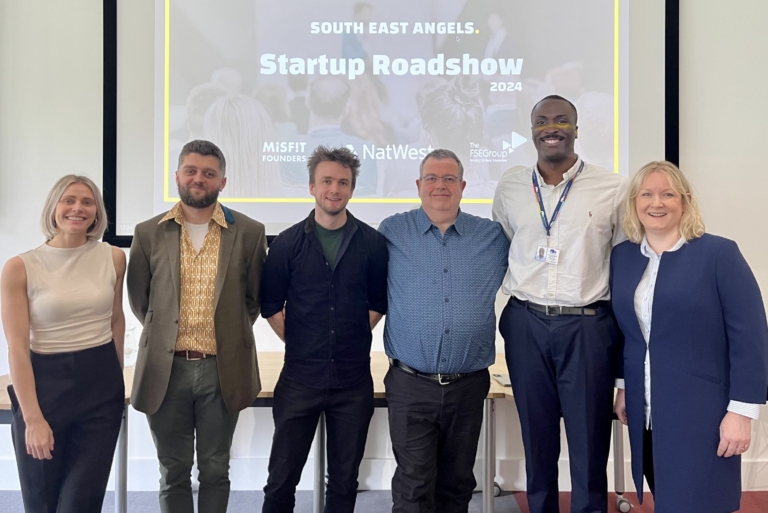Beyond the balance sheet
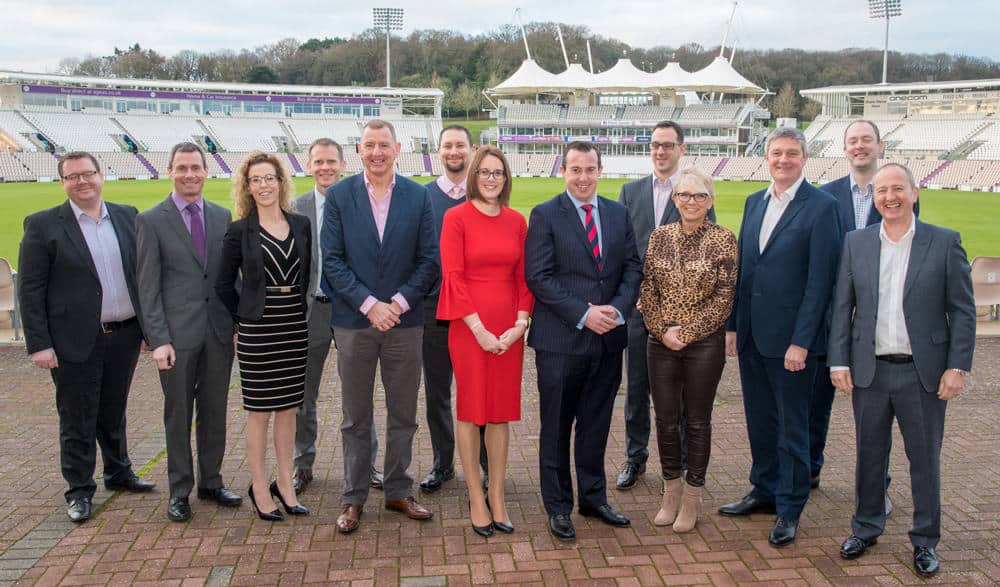
Companies from the Solent 250 listing of the region’s privately-owned businesses attended the roundtable at the Hilton Ageas, Southampton, hosted by The Business Magazine. It was sponsored by HSBC, advisory and accountancy firm RSM, law firm Irwin Mitchell and specialist recruitment company CMA Recruitment Group. Tim Wickham reports the Roundtable highlights.
Participants
David Clayden: Non-executive director, Aap3
Debbie Beaven: Chief financial Officer, Simplyhealth
Richard Dibden: Commercial director, CMA Recruitment Group
John Gosling: Managing director, TJ Transport
Mark Baskerville: Chief financial officer, Highwood Group
Gavin Hills: Finance director, Carrington West
Anthony Reed: Area director for Hampshire and Dorset corporate banking, HSBC
Hannah Clipston: Partner, Irwin Mitchell
Mark Vincent: Director, Amiri Construction
Graham Wade: Managing director, Draper Tool Group
Peter Williamson: Business systems director, Knights Brown Construction
James Tetley: Partner, RSM, chaired the discussion
Who do you think you are?
There’s more to business than the profit and loss and balance sheet. James Tetley, chaired a lively roundtable around how sentiments have changed in recent years, and opened the discussion with the question: What are we doing to create modern, accountable and well-led organisations?
He set the context in terms of changes over the past decade that mean financial metrics are not the only measure of business success. Employees and customers alike expect businesses to be a positive force for good. Their views are being informed by an increase in reporting on non-financial matters, such as payment practices, gender pay gaps and corporate social responsibility. This offers the public a “window into the workings of each of our businesses,” said Tetley, who went on to add: “Whether pressure to report metrics has been the reason companies have given more focus to these aspects of their business, or whether they had already recognised the importance may come out of the morning’s discussions”.
Peter Williamson explained how construction business Knights Brown took the opportunity of a recent corporate re-brand to re-examine itself. “We looked not at what we do, but why we do it, and found that what matters most to us is our employees and their pride in their work. The core of our business is our people. The more skilled and engaged we are, the better we are at delivering successful projects”
He added: “We brought in a human resources specialist who was brilliant working with our employees to develop our guiding principles and put in place changes, for example, recruiting with our guiding principles in mind. We think it’s working. We are growing, and employee retention is improving.”
Simplyhealth, a company with over 145 years of experience in offering healthcare services, products and support, has a similar focus on its purpose. Debbie Beaven said: “We determine what is an acceptable profit level in terms of our purpose, which is “improving access to healthcare, making it easy for the many and for the long term”. This guides the long-term products and services we offer. Our purpose comes first and profit runs a close second, it’s never profit for profit’s sake.”
David Clayden from technical services and recruitment company Aap3: “One thing that has changed is the spotlight around legislation and corporate governance that affects all businesses. We are so much more visible, which is the right thing. It makes us all look at our businesses in the right way.”
What company characteristics attract talented people?
Some companies offer an extensive list to attract employees, observed Clayden. “I’ve seen sleep pods, gaming tables, even a barista who will make your coffee. For some candidates, that can be fantastic; for others it can be a turn off. There’s a risk that it becomes a competition between companies to offer lots of perks. You have to ask people what they really want, get to the nitty gritty of what makes you attractive to them. If you ask most employees it is how interesting and challenging the work is and the team in which they work that gets them up in the morning.”
CMA Recruitment’s Richard Dibden: “There has definitely been a shift in the past four or five years. CMA publishes a remuneration survey each year asking these very questions to over 500 finance and HR professionals in the region. Overwhelmingly, while salary remains a factor, many respondents prioritise flexible working, employee engagement, company culture, travel time, CSR and career progression.”
Hannah Clipston said many graduates join law firms with leadership roles in mind from day one. “We work hard at developing our up-and-coming leaders.”
This approach resonated with Graham Wade at Chandler's Ford-based Draper Tool Group, a fourth generation family business celebrating its centenary this year. “Traditionally, we have led from the top. Nowadays, we look at empowering those below and having less micro-management.”
Mark Baskerville at property developer Highwood Group said: “Empowerment is interesting for us. We have grown very quickly from the original three co-owners. We have to think about how we manage a balance between encouraging people to use their initiative and feel empowered against maintaining a level of control that all are comfortable with.”
Clayden observed that it was important to get the balance right: “People can expect a lot early on in their careers. But they also have to look at what it says on their job spec – they’ve got to be able to do their jobs before they are recognised and rewarded.”
Graduates and apprentices bring enthusiasm that can be translated into company loyalty, thought Clipston: “As well as graduates we’re also looking at apprenticeships. You get great loyalty and commitment at that level. We try to be very clear with employees about their career development plan.”
Tetley: “I’d echo that. We have taken on apprentices, school leavers and graduates and the mix works well – ultimately, it is down to the individual. We’ve also recently overhauled our recruitment process to try and reduce unconscious bias, by moving to a strengths-based approach, and initial feedback shows this again has had a big impact on application numbers.”
Anthony Reed: “At HSBC we have looked to bring some apprentices into our corporate teams. Some display excellent people skills which is evident in the way they interact with customers, and their ability to look beyond a customer’s P&L.”
Williamson: “About 9% of our workforce are graduates, apprentices or year in industry placements. We find we can attract them if we set out our expectations of them and make sure we deliver what we say we will for them.”
The construction industry’s struggle to attract quality students in the 16-18 age range is something regional building contractor Amiri seeks to address by promoting its strengths to candidates. Mark Vincent: “We visit sixth form colleges and schools to persuade students that school leavers don’t just have a place in our industry but a career in a professional industry – something the industry is not perceived as being. Trainees come to us for work experience, to gain their further and higher education in parallel and build a strong CV.”
Gavin Hills at technical recruitment specialists Carrington West highlighted the challenges of finding staff on temporary placements, especially in the technology sector: “Candidates are a scarce resource. A lot of what we do involves finding the people with the right experience to fulfil short-term contracts.”
After its management buy-in two years ago Amiri underwent IIP (Investors In People) accreditation to improve how it engages with employees. Vincent: Engagement evolves around your culture. But there can be a downside to supporting your employees – some members of our Board were worried that our trainee programme would just benefit bigger companies who might poach our people. The way around this is to take the risk of investing in your people but make sure you create a work/life balance that encourages loyalty so staff won’t want to leave.”
Williamson: “I agree. We invest heavily in training and development, and whilst we don’t have the international reach of some of the larger construction companies, we’re not seeing many lured away. Our placement students often tell us their work experience with us is much more hands on than many bigger companies. Giving them real responsibility at an early stage is very attractive to them and draws them back to work with us full time on graduation.”
Do you meet your customers’ expectations?
Clayden: “Customers say they want to look at you to see whether you fit in with them before they choose you. We try to avoid this process becoming a sterile tick-box exercise by engaging with our customers.”
Beaven: It’s a partnership with your customers where you continually try to connect better with them and to stay relevant to their changing needs.”
Clayden: “Customers want to identify suppliers and partners who mirror their beliefs and ethics. It is also important though to look at new and emerging partners so that the process does not become sterile or a tick box exercise.”
But businesses need to be wary of diluting their own values just to suit their customers, observed Dibden: “You can’t necessarily reflect all of a customer’s values. It’s important to focus on your own values, which should naturally resonate with those of your clients.”
Hills: “We deal with large businesses and local authorities. We need the base of compliance with things like meeting ISO standards, but once we are through the door it’s about one-to-one interactions. That’s when customers can get a clear understanding of our values of passion, integrity and excellence.”
Beaven: “You need a sense of belief in what you do and to share this through ‘storytelling’, using examples of what your business does and the impact it has.”
Clipston: “It is also important to look at things that haven’t gone so well and where improvements can be made. Learning from mistakes is often the incubation ground for creativity and change. It’s harder to discuss things that haven’t gone as well as expected and it requires an open, honest and blame free culture. This can be hard in the legal profession but we try and tackle this by encouraging open discussion and feedback in a number of forums and not just at formal feedback sessions”
Baskerville commented that it was important to be genuine: “Otherwise, people may take a cynical viewpoint – that you’re only doing things because you have to. We try and make sure we do what we say we will.”
Capitalising on good ideas
The group turned their thoughts to making sure company culture encourages employees to participate in how businesses operate. Clipston: “We have an ‘innovation fund’ that works hard to encourage staff to share their new ideas and ways of working. Staff email their ideas to a dedicated email account and the fund works quickly to share, test and fund those ideas to bring them to life.”
Vincent: “We’ve just launched something similar for knowledge sharing. We get brilliant ideas from one project that we can share with other projects. We want to encourage people to engage and offer rewards for the brightest ideas. It shows employees we are listening to them.”
Williamson: “Safety is a big focus in the construction industry. When staff have good ideas to improve safety we communicate this to everyone. We also recognise and reward the individuals.”
Tetley: “We introduced the digital High Five a year ago, where you can send an instant digital ‘thank you/well done’ to recognise colleagues, and it's displayed on an online recognition board. The beauty is that there’s not too much process about it. The management team weren’t sure what effect it would have, but the feedback shows it really works and our teams love it.”
Reed: “We hold At Our Best celebratory events and dinners where all attendees are nominated by peers. Every nominee for the At Our Best reward scheme is reviewed and the top 300 attend a celebratory event. At a local level, we try and take the time out to thank them personally. It’s important to feel valued.”
Williamson: “Our Right Works is an embedded company ethos and a code of practice guide. It’s all about getting the fundamentals right. Each year we raise the standard and our top performers are rewarded at an annual awards dinner. We also have an online recognition feature on our intranet that is gaining traction.”
Beaven: “We have Acts of Brilliance recognition but are aware people’s views on what is brilliant can vary. However, peer-to-peer voting to recognise each is a good way to celebrate success and to share ideas.”
John Gosling: “As a transport company we don’t have a great deal of day-to-day interaction with employees who are on the road a lot of the time. Positive feedback from customers is an important way we can see how we are performing and how they view us.”
Taking the workforce’s pulse
The panel discussed the various ways businesses survey their employees and how they use this information to maintain and strengthen their culture.
Baskerville said Highwood Group had just run its first employee survey and was looking forward to seeing the results. Williamson said Knights Brown has been conducting them for five years. “The important thing is to quickly come up with an action plan and communicate it,” he said.
Vincent: “We run employee pulse surveys regularly. If you leave it too long people forget about them. We always let employees know we’ve received their feedback – it’s about two-way communication.”
Clayden agreed that surveys give employees a voice and a channel to share their ideas. Wade said senior level involvement was key: “All responses to our surveys go to the Board and a director takes on each piece of feedback and has to act on it the same day.”
Beaven: “We use a quarterly survey. We also ran an employee engagement event which lasted a whole week to ensure all 1,300 employees had the opportunity to attend for half a day to hear about our plans, vision and to talk to our leadership team. I think we got amazing employee engagement from this.”
The cost of getting it right
Improving relationships with employees and customers takes time and costs money. The group discussed ways they make sure the effort is worth it.
Williamson: “The recruitment process takes a massive amount of management time. Anything you can do to bring down the number of levers you need to pull in recruitment will have an impact on your P&L.”
Dibden: “Recruitment can be time consuming. But the cost of getting it wrong is far greater than getting it right. I’ve seen reports that say the cost of taking on the wrong person at an executive level can be 200 times their base salary. As well as the quantifiable costs, there’s the damage the wrong person can do to your business – to your brand, to customer relationships and to company values and culture.”
Wade: “We are better now at training our people and unlocking the potential of our second tier of management. It costs, but it’s about doing the right thing for your business in the long term.”
Everyone agreed that there should be no compromise on service quality, even if that means not being the cheapest. Williamson: “If you offer good customer service you won’t necessarily be as cheap as your competitors. But it’s more important to us to get it right.”
Vincent: “You have to ask yourself if you want to work with clients who consistently go for the cheapest supplier. It’s a question of how you measure your clients and what you expect from them. We do this all the time when we evaluate customers.”
Gosling: “We rate our customers from A to D. One of our customers generating the highest turnover for us was a D because they constantly queried things and paid late. The Board decided to drop them. Eighteen months later they came back to us and are now one of our best customers. They realised we are right for them because we provide better – and legally compliant – services.”
Gender balance or getting the 'right person right job'?
Vincent: “When we go into schools there is still a strong view among year 10 and 11 girls that the construction industry isn’t for them. There’s a lack of understanding in schools about diversity in what is clearly still viewed as a very male dominated workplace.”
Beaven: “Even though I left the construction sector I still feel we need to hear more stories about women who have succeeded in the male-dominated construction environment.”
Vincent: “That’s what we’ve been doing. We’ve an ex work-experience pupil who is now heavily involved in a program to introduce girls to STEM careers, while on her civil engineering degree. She visits schools and she’s a real inspiration. But it’s a tough sell.”
Williamson: “The IT side of businesses have had a bit of a reputation as being for geeky boys, but this perception is starting to fall away.”
Clayden agreed: “We’re seeing more of a mix in technology roles, as well as initiatives such as women in technology and engineering. I think more young women are getting involved in STEM subjects, but it’s taking a long time, even with the growth in computer gaming technology that appeals to a broader audience.”
Clipston: “We are about 60/40 in favour of women at the graduate level, but this does drop off along the career path to partner level. Retention is a challenge so we have developed ways to champion, support and develop our staff; examples include our Wellbeing Hub, IMPowered (focusing on promoting gender equality) and IM Modern Life (focusing on issues facing modern families). It is important to IM and our future growth to have diversity of thought and experience in our teams as well as making sure we find the right person for the job.”
Beaven: “I agree about getting the right person for the job and I’m not sure about having quotas. It’s difficult getting the balance right if senior decision makers tend to be white middle-aged men. However, in Norway companies have used quotas for years. This approach is now embedded and you see a lot of women on company Boards in Norway. We don’t have an issue with gender diversity at Simplyhealth; it is very well balanced. Our executive leadership team has gone from having one women on it to now having more women than men.”
Dibden: “You have to ask yourself ‘why is diversity important?’. For me a diverse workforce provides the capability to have greater empathy – both internally within your own team, and externally with your customers.”
Draper doesn’t use quotas. Wade commented: “We have a tremendous retention rate with about 15% of our workforce with us over 25 years. We have a culture of promoting people through the business. We have a good balance of men and women in IT, customer service, marketing and finance roles. But our buying and tools departments have traditionally been more male oriented.”
How do you protect your brand from reputational damage?
Reed: “Your brand is everything. If your people aren’t guarding your brand on a daily basis it can quickly start to become eroded. The flipside is that you can become lackadaisical and assume your brand will always represent you personally.”
Vincent: “You have to make sure perception is reality with your brand. It’s our people who differentiate us.”
Clayden: “For client meetings we usually take more than one person, for example, someone with specific technical knowledge if the client wants to discuss a technology solution. That helps us present a stronger face for our brand.”
Increasingly, brand reputations can be enhanced or damaged online. “There’s a paradox in knowing your business is all about your people, but technology means they interact less with clients. Brand value and loyalty also comes through your website and online presence,” pointed out Reed.
Vincent: “Digital is important. A few years ago we decided to be very active on social media. It’s a quick and easy way to get your message across and win business. It magnifies awareness of your brand.”
Beaven: “You have to be careful about damaging your reputation in online interactions, however if you are leading and managing your business in a purposeful way, that should shine through in how you communicate on social media and in all your communications.”
Gosling: “We’re particularly sensitive to social media comments about our drivers out on the road and we make sure we always respond to negative comments. It’s an effective way to promote and protect our brand”
Tetley concluded the roundtable: “Around the table, we represent many different types of businesses but what has stood out from the discussion is that we are all on a similar journey and have recognised the importance of these issues. The other noticeable factor is that while the input towards improving things like employee loyalty and brand value may be intangible (or certainly difficult to quantify in terms of cost) that these have very tangible outcomes on our balance sheets.”

